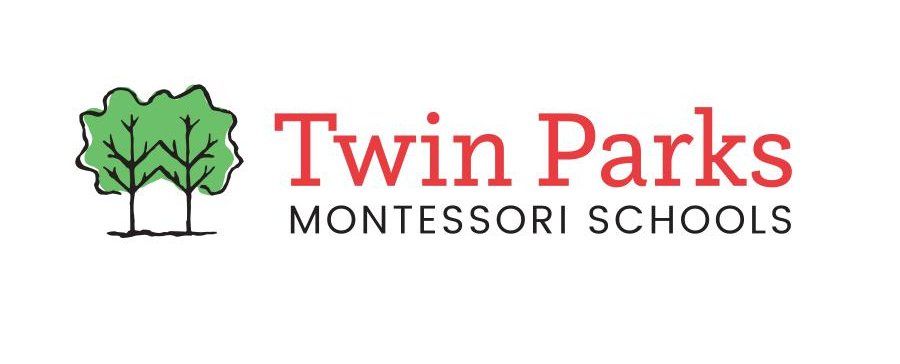Admissions FAQ
General FAQ
-
When may I submit my application?
Applications for the following school year are accepted beginning August 1st and will be processed starting the Tuesday after Labor Day. The schools cannot accept an application before this date. Applications for the current school year are accepted based on availability. Please contact the school directly to inquire about current openings.
At any point during the admissions process, families may submit their application online along with the $50.00 application fee to hold their place in the application process.
-
Why may I only apply to one of the three Twin Parks schools?
You are invited to get to know just one or all three of our locations. Each school's admissions process will allow you to become familiar with our schools.
We ask that families then choose one campus to which to apply so we are not duplicating our admissions process. Most families choose to apply to a school based on its location in reference to their homes or to public transportation. All three Admissions Offices are available to answer your questions regarding choice of campus.
-
Do we have to apply before touring the school?
No, families are invited to apply to the school at any point in the admissions process to hold their place in the application process.
We do ask that families schedule and attend a Virtual Information Session prior to touring the school. They may then choose to submit an application to continue in the admissions process.
-
How many students are in each school?
Each school has the capacity for approximately 175 students.
-
Do children change classrooms as soon as they are old enough to be enrolled in the next level?
Children and families enroll for a level and are assigned a classroom for the school year. No mid-year change in levels or classrooms occur. Twin Parks’ teachers are trained to address the cognitive, social and developmental growth for a span of several years, and are fully qualified to meet the needs of their oldest as well as youngest students. In a multi-aged, prepared classroom, children are able to advance in the areas of their strength, while spending extra time as needed in areas that are more of a challenge. There is no need to rush this precious time of learning.
Schedule FAQ
-
What time is drop off and pick up?
Drop off is anytime between 8:00 am and 9:00 am.
There are four pick up times depending on a child's age and program: 12:30 pm, 3:30 pm, 4:30 pm, and 6:00 pm (5pm on Fridays).
-
Do you offer a Half Day program?
Twin Parks offers a half day program for our toddler students. Students in the half day program attend school from 8:30am until 12:30pm and eat lunch at school.
The half day program is offered at one annual tuition for toddlers, even if families choose to attend for 2, 3, or 5 days per week. This is a option for toddlers who are starting school gradually.
-
May my child stay until 4:30pm or until 6:00pm on only some of the days that he/she is enrolled?
Children are enrolled for the same pick-up time for every day that they attend school. Schedules can be extended during the school year, space permitting. Parents may contact their child's teacher to pick their child up earlier any day they wish, as necessary.
-
Does the school follow the public school or the private school calendar?
Twin Parks’ schools generally follow the public school calendar, with the exception of a few professional developments or parent/teacher professional development days.
Tuition FAQ
-
How and when are tuition payments made?
Tuition is due in full upon signing the contract. However, as an accommodation, we allow quarterly payments that are due May 1st, August 1st, November 1st, and February 1st and require a security deposit (1/10th of annual tuition).
-
What is a Security Deposit?
A security deposit, equal to one month’s tuition, is required for families choosing the quarterly payment option. The security deposit is refundable after the child’s last month of attendance, provided that all terms of the parent agreement have been met. The terms of the parent agreement are for the full school year, even if you move.
-
What methods of payment do you accept?
Parents who pay in full may pay by check or by direct debit (ACH). Parents who pay quarterly must pay by direct debit (ACH). The schools do not accept credit card payments.
-
We are not sure that we will be in New York for the full school year. What happens if we move?
The terms of the parent agreement are for the full school year, even if you move.
-
What if the school is full and another child takes my child’s vacated place?
You will still be obligated to the terms of the parent agreement.
Classroom FAQ
-
How many children/teachers are in each classroom?
The teacher student ratio for infants is 1:4, Toddlers 1:6, and Early Childhood 1:8. In many classrooms, a third teacher arrives at 9:45 am and stays until 6:00 pm.
-
Transition Process: Phase-in Philosophy
At Twin Parks Montessori Schools NYC, we want the transition from home to school to be as smooth and comfortable as possible. We work together with each family to make sure that every child has a gradual phase-in that works best for the individual child.
Phase-In refers to the initial time period of transition for children as they begin to attend school. During this time, children are becoming familiar with a new environment, new people, and new routines. This is also a period in which children may experience separation for the first time from a parent, family member or loved one. The teachers work with the family and the child to ensure a smooth and supportive transition.
The key to a successful phase-in process is that it’s done gradually and projecting the utmost confidence in your child's ability to phase-in successfully. A scenario may be as follows: Day 1, your child is in the classroom for an hour or two. You, or a caregiver, will then pick up your child and come back the next day. On day 2, your child will stay longer. We work out a schedule based on each individual child. On rare occasions, a parent or caregiver may remain in the classroom for a time as part of the phase-in process. It is our goal that by the end of the week, your child may be staying for lunch, or even naptime.
Every child’s separation process is different; some children may phase-in faster than others. This is not a reflection on you or your child. It may take a week, or two weeks, or even a month (all will be okay!) until your child feels comfortable saying goodbye to you. We realize that this can be a time-consuming process; and it is designed solely for the child’s benefit.
-
May I come in the morning to help my child get settled?
Once the child has phased in to the classroom, parents drop off their toddler and early childhood children at the door and the children walk in to their classrooms unattended. This allows the child to leave the parent as opposed to the parent coming in and then leaving the child. As we work with children on gaining independence, this small step is just one of many in learning how to take care of oneself, as well as one’s belongings and the classroom environment.
-
Do you provide meals and snacks?
Children are welcome to bring their own lunch from home. The school provides a delicious and healthy morning snack. If your child stays for the afternoon, we ask that you send in an afternoon snack.
Families also have the option of using our catering service, Little Green Gourmets, for lunch for an additional fee. Little Green Gourmets are well-known for providing hot and delicious, individually-packed meals made from scratch with local, sustainable & organic ingredients. Vegetarian meals are an option and most allergies can be accommodated. (We use the same catering service for all three schools).
-
How much time in the day is available for the children to nap?
How long a child naps depends on a few factors, including the child's age. Parents and teachers stay in close communication regarding a child's sleep cycle, (along with food, and toileting and toilet training, etc.) to ensure a workable plan between home and school for all involved.
All families at each level provide a crib-sized sheet and blanket (and optional stuffie) that is sent home each week to be cleaned.
Infants have several opportunities during the morning and early afternoon to nap and rest. Cribs are available for those infants not yet "rolling".
Toddlers typically rest on their own school cots after lunch for a long as they need, up until it is time for them to have a snack and get ready to go home, about 2+ hours.
Early Childhood students also have ample time to rest on their own cots after lunch. Once they are done with naps, they rest for a while and may then engage in a quiet activity away from their sleeping classmates.
Again, partnering with families is key to creating a good plan.
-
How much time may parents spend in the classroom?
Parents may participate as much or as little as they wish. Parents may arrange times with teachers to volunteer in the classroom. Some examples of volunteer opportunities are classroom readers, presenting cultural topics at circle time or chaperoning on field trips. Parents are also encouraged to observe in the classroom.

